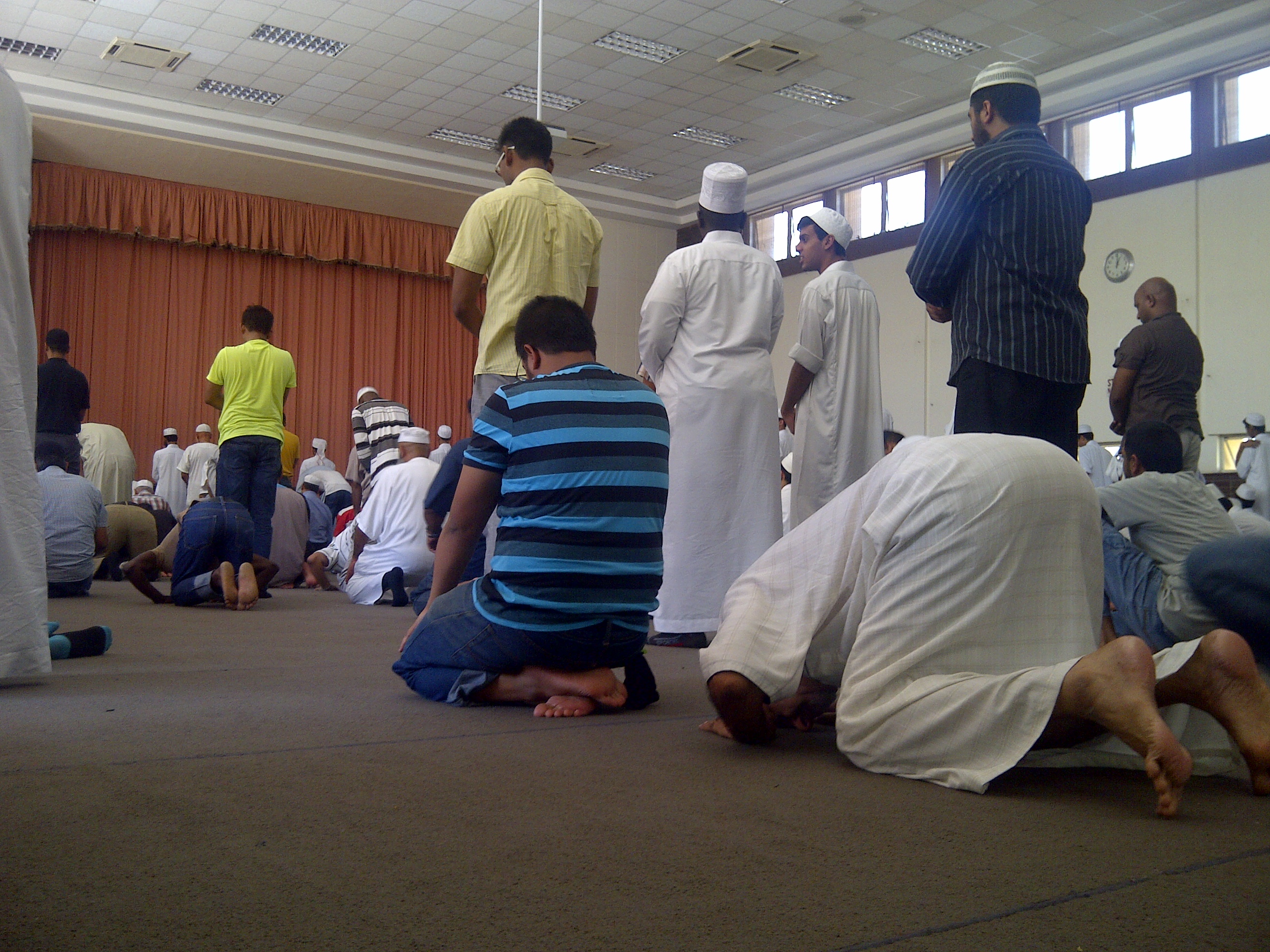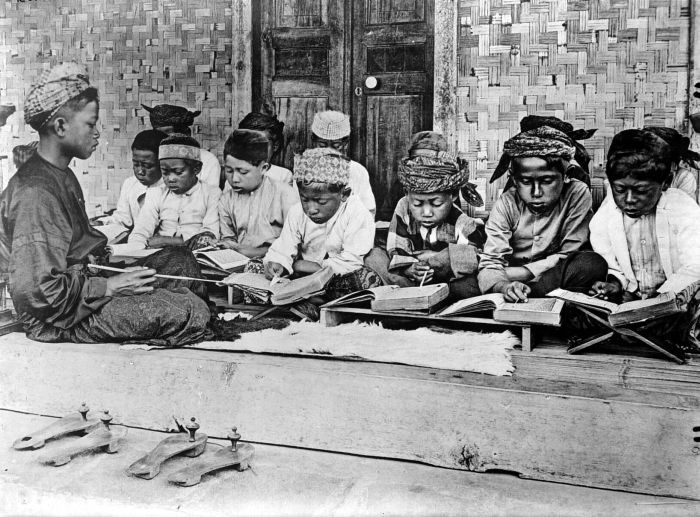|
Malik Ibrahim
Malik Ibrahim (died 7 April 1419), also known as Sunan Gresik or Kakek Bantal, was the first of the Wali Songo, the nine men generally thought to have introduced Islam to Java. Biography Ibrahim's origin is unclear, although it is generally agreed that he originated from outside of Java. He is thought to have been born in the first half of the 14th century. Ibrahim is known by several names in the '' Babad Tanah Jawi'' and other texts. In a transcription by J. J. Meinsma, he is identified as Makhdum Ibrahim as-Samarqandy (localised to Syekh Ibrahim Asmarakandi); this indicates a possible origin from Samarkand in modern-day Uzbekistan. However, other sources suggested that Asmarakandi came in the 16th century and is buried in Tuban Regency, making him a different person. The most generally accepted history, supported by a reading by J. P. Moquette of the inscription at Ibrahim's grave, identifies him as having come from Kashan, Persia (modern day Iran). Dutch writer and researc ... [...More Info...] [...Related Items...] OR: [Wikipedia] [Google] [Baidu] |
Gresik Regency
Gresik Regency ( older spelling: Grissee, ) is a regency within East Java Province of Indonesia. As well as a large part of the Surabaya northern and western suburbs, it includes the offshore Bawean Island, some 125 km to the north of Java and Madura. The regency's administrative centre is the town of Gresik, about 25 km to the northwest of Surabaya. Gresik Regency (excluding Bawean Island) is also part of Gerbangkertosusila, the metropolitan region of Surabaya. Etymology Thomas Stamford Raffles in his book, The History of Java, reveals that the name of Gresik comes from the word ''Giri Gisik'', which means "mountain near the coast", referring to the hilly topography of the Gresik town center near the coast. History Since the 11th century, Gresik has become an international trade center visited by many nations such as, Chinese, Arabs, Champa, and Gujarat. Gresik Regency is also the first entry point for Islam in Java, which among others is marked by the existence of an ... [...More Info...] [...Related Items...] OR: [Wikipedia] [Google] [Baidu] |
Pasai
The Samudera Pasai Sultanate (), also known as Samudera or Pasai or Samudera Darussalam or Pacem, was a Muslim harbour kingdom on the north coast of Sumatra from the 13th to the 16th centuries CE. The kingdom was believed to have been founded by Merah Silu, who later converted to Islam and adopted the name Malik ul Salih, in the year 1267 CE. Little evidence has been left to allow for historical study of the kingdom. Etymology Based on the local literature Hikayat Raja-raja Pasai, 'Samudera' can be inferred to have come from the word "Semudera" (), which meant 'a very large ant'. The name was given by Merah Silu when he discovered an ant as large as a cat while hunting at a 'high ground'. Eventually, the place was cleared for the establishment of a new state and 'Semudera' was adopted as its name. 'Samudera' is also theorised to have been derived from Samudra meaning ocean in Sanskrit and Tamil. The literature also indicates the origin of the name 'Pasai' which came from ' ... [...More Info...] [...Related Items...] OR: [Wikipedia] [Google] [Baidu] |
East Java
East Java ( id, Jawa Timur) is a Provinces of Indonesia, province of Indonesia located in the easternmost hemisphere of Java island. It has a land border only with the province of Central Java to the west; the Java Sea and the Indian Ocean border its northern and southern coasts, respectively, while the narrow Bali Strait to the east separates Java from Bali by around . Located in eastern Java (island), Java, the province also includes the island of Madura Island, Madura (which is connected to Java by the longest bridge in Indonesia, the Suramadu Bridge), as well as the Kangean Islands, Kangean islands and other smaller island groups located further east (in the northern Bali Sea) and Masalembu Islands, Masalembu archipelagos in the north. Its capital is Surabaya, the Largest cities in Indonesia, second largest city in Indonesia, a major industrial center and also a major business center. Banyuwangi is the largest regency in East Java and the largest on the island of Java. The p ... [...More Info...] [...Related Items...] OR: [Wikipedia] [Google] [Baidu] |
Julian Calendar
The Julian calendar, proposed by Roman consul Julius Caesar in 46 BC, was a reform of the Roman calendar. It took effect on , by edict. It was designed with the aid of Greek mathematicians and astronomers such as Sosigenes of Alexandria. The calendar became the predominant calendar in the Roman Empire and subsequently most of the Western world for more than 1,600 years until 1582, when Pope Gregory XIII promulgated a minor modification to reduce the average length of the year from 365.25 days to 365.2425 days and thus corrected the Julian calendar's drift against the solar year. Worldwide adoption of this revised calendar, which became known as the Gregorian calendar, took place over the subsequent centuries, first in Catholic countries and subsequently in Protestant countries of the Western Christian world. The Julian calendar is still used in parts of the Eastern Orthodox Church and in parts of Oriental Orthodoxy as well as by the Berbers. The Julian calenda ... [...More Info...] [...Related Items...] OR: [Wikipedia] [Google] [Baidu] |
Hijri Year
The Hijri year ( ar, سَنة هِجْريّة) or era ( ''at-taqwīm al-hijrī'') is the era used in the Islamic lunar calendar. It begins its count from the Islamic New Year in which Muhammad and his followers migrated from Mecca to Yathrib (now Medina). This event, known as the Hijrah, is commemorated in Islam for its role in the founding of the first Muslim community (''ummah''). In the West, this era is most commonly denoted as AH ( la, Anno Hegirae , 'in the year of the Hijra') in parallel with the Christian (AD), Common (CE) and Jewish eras (AM) and can similarly be placed before or after the date. In predominantly Muslim countries, it is also commonly abbreviated H ("Hijra") from its Arabic abbreviation '' hāʾ'' (). Years prior to AH 1 are reckoned in English as BH ("Before the Hijrah"), which should follow the date. A year in the Islamic lunar calendar consists of twelve lunar months and has only 354 or 355 days in its year. Consequently its New Year's Day occurs ... [...More Info...] [...Related Items...] OR: [Wikipedia] [Google] [Baidu] |
Sunnah Salat
A Sunnah prayer ( ar, صلاة السنة) is an optional or supererogatory salah (ritual prayer) that can be performed in addition to the five daily salah, which are compulsory for all Muslims. Sunnah prayer have different characteristics: some are done at the same time as the five daily compulsory prayers, some are done only at certain times (e.g. late at night), or only for specific occasions (e.g. during a drought); some have their own name (e.g. ''Tahajjud'') and some are identified by how they are performed (e.g. "4 (rakat) before Zuhr and 2 after"). The length of Sunnah prayer also varies. While the five daily salah are ''wajib''/''fard'' (obligatory), Sunnah prayer (and other sunnah deeds) are ''Mustahabb'' (encouraged) -- those who perform them will earn a reward in the afterlife, but there will be no punishment for neglecting them. Sunnah (in mainstream Islam), means the traditional customs and practices that (are believed to) follow the example of the Prophet of I ... [...More Info...] [...Related Items...] OR: [Wikipedia] [Google] [Baidu] |
Human Sacrifice
Human sacrifice is the act of killing one or more humans as part of a ritual, which is usually intended to please or appease gods, a human ruler, an authoritative/priestly figure or spirits of dead ancestors or as a retainer sacrifice, wherein a monarch's servants are killed in order for them to continue to serve their master in the next life. Closely related practices found in some tribal societies are cannibalism and headhunting. Human sacrifice was practiced in many human societies beginning in prehistoric times. By the Iron Age with the associated developments in religion (the Axial Age), human sacrifice was becoming less common throughout Africa, Europe, and Asia, and came to be looked down upon as barbaric during classical antiquity. In the Americas, however, human sacrifice continued to be practiced, by some, to varying degrees until the European colonization of the Americas. Today, human sacrifice has become extremely rare. Modern secular laws treat human sacrifices ... [...More Info...] [...Related Items...] OR: [Wikipedia] [Google] [Baidu] |
Pesantren
''Pesantren'', or ''pondok pesantren'', are Islamic boarding schools in Indonesia. They consist of pondok, mosque, santri, teaching of classical Islamic texts and Kyai.Zamakhsyari Dhofie''The Pesantren Tradition: A Study of the Role of the Kyai in the Maintenance of the Traditional Ideology of Islam in Java''Tempe, AZ: Arizona State University Program for Southeast Asian Studies Monograph Series. According to one popular tradition, the ''pesantren'' education system originated from traditional Javanese ''pondokan''; dormitories; ashram for Hindu or viharas for Buddhists to learn religious philosophies, martial arts and meditation. Institutions much like them are found across the Islamic world and are called ''pondok'' in Malaysia and Southern Thailand and '' madrasa Islamia'' (Islamic madrasa) in India and Pakistan and much of the Arabic-speaking world. The ''pesantren'' aim is to deepen knowledge of the Qurʾān, particularly through the study of Arabic, traditions of exegesis, ... [...More Info...] [...Related Items...] OR: [Wikipedia] [Google] [Baidu] |
Trowulan
Trowulan is an archaeological site in Trowulan (subdistrict), Trowulan Subdistrict, Mojokerto Regency, in the Indonesian province of East Java. It includes approximately 100 square kilometres and has been theorized to be the site of the eponymous capital city of the Majapahit, Majapahit Empire, which is described by Mpu Prapanca in the 14th-century poem Nagarakretagama and in a 15th-century Chinese source. When it was the capital of the Majapahit Empire, the city was known as Wilwatikta, which is a name also synonymous with the empire's name. It was razed during the invasion of Girindrawardhana to defeat Kertabhumi in 1478. After this event Majapahit's capital was moved to Daha (Kediri (city), Kediri). The Trowulan Museum includes a collection of artifacts. The Nagarakretagama contains poetic descriptions of the palace of Majapahit and its surroundings but is limited to the royal and religious sectors. Some of the details are vague, and scholars who have tried to compile a plan ... [...More Info...] [...Related Items...] OR: [Wikipedia] [Google] [Baidu] |
Caste
Caste is a form of social stratification characterised by endogamy, hereditary transmission of a style of life which often includes an occupation, ritual status in a hierarchy, and customary social interaction and exclusion based on cultural notions of purity and pollution. * Quote: "caste ort., casta=basket ranked groups based on heredity within rigid systems of social stratification, especially those that constitute Hindu India. Some scholars, in fact, deny that true caste systems are found outside India. The caste is a closed group whose members are severely restricted in their choice of occupation and degree of social participation. Marriage outside the caste is prohibited. Social status is determined by the caste of one's birth and may only rarely be transcended." * Quote: "caste, any of the ranked, hereditary, endogamous social groups, often linked with occupation, that together constitute traditional societies in South Asia, particularly among Hindus in India. Althoug ... [...More Info...] [...Related Items...] OR: [Wikipedia] [Google] [Baidu] |
_TMnr_10033233.jpg)
_(cropped).jpg)

_-_Ciudad_de_México.jpg)


